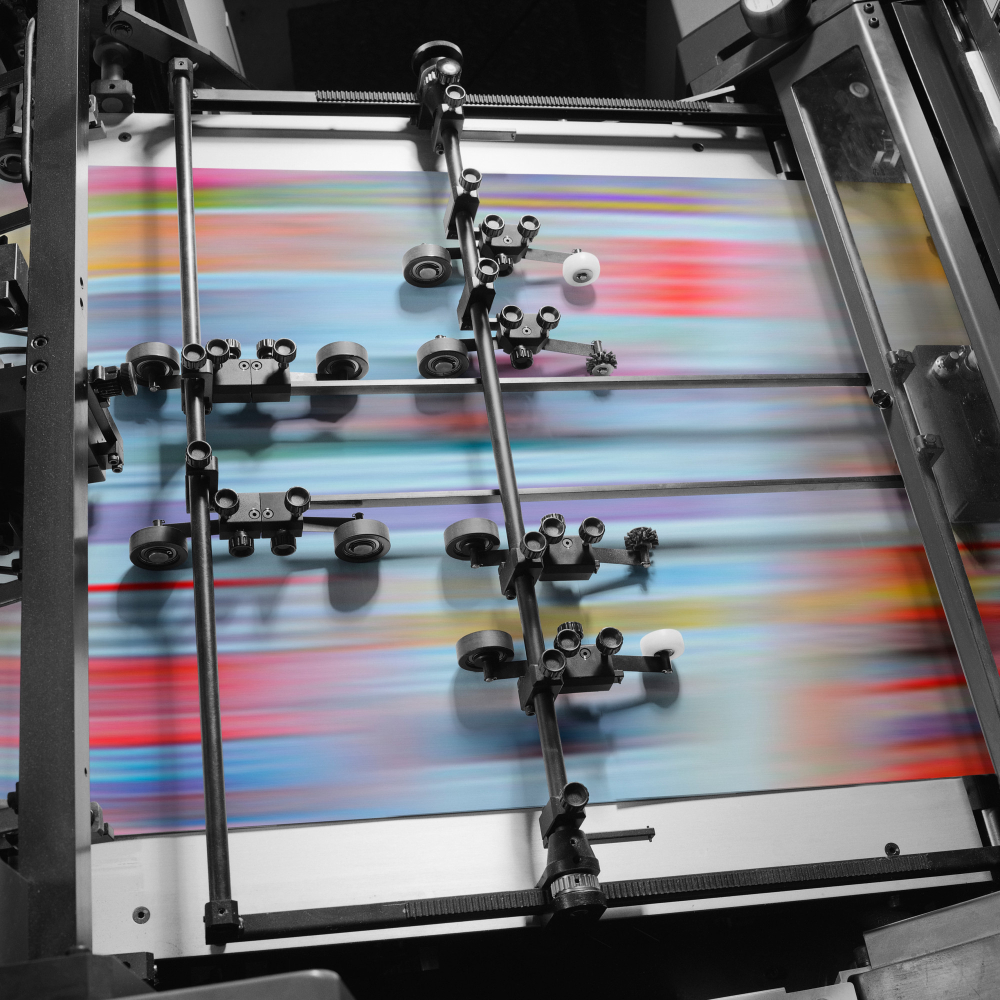
To achieve correct flexo printing, certain factors must be applied properly. These factors directly impact print quality and efficiency. Here are the essential elements for correct flexo printing:
- Correct Plate Selection
- Features: Flexo printing plates are generally made of photopolymer or elastomer materials. The surface of the plates should be designed to allow smooth ink transfer.
- Importance: High-quality printing plates improve print quality and help keep details sharp.
- Excellent Anilox Roller Selection
- Features: The anilox roller is used for ink transfer. The cell structure on the roller’s surface transfers the right amount of ink to the printing plate.
- Importance: The correct cell structure of the roller ensures the color intensity and uniformity of the print. Moreover, the roller’s cleaning and maintenance are also crucial.
- Appropriate Ink Selection
- Features: Ink types for flexo printing can be water-based, solvent-based, UV-based, or elastomeric. The viscosity of the ink is a critical factor for correct printing.
- Importance: Good ink ensures print durability, color depth, and surface adhesion. Its drying properties must also be considered as it needs to dry quickly.
- Correct Print Speed Adjustment
- Features: Correct adjustment of print speed affects ink transfer and drying time.
- Importance: If the speed is too high, print quality may degrade, while too low a speed reduces efficiency. Printing should be done at an optimal speed.
- Regular Adjustment of Printing Stations
- Features: Flexo printing presses may have multiple printing stations. Proper alignment of each station prevents color overlap and ensures sharp prints.
- Importance: Careful alignment of printing stations is crucial, as misalignment can cause color shifts or print errors.
- Correct Paper/Film Selection
- Features: The material used for printing must be suitable for flexo printing. Paper, plastic films, foils, or other materials may be used. These materials must have properties that allow the ink to be properly absorbed and transferred.
- Importance: The quality and type of the material determine the aesthetic and functional characteristics of the print result.
- Tight Tension Control
- Features: The material must move through the flexo press with the correct tension. This is critical for achieving smooth and flawless prints.
- Importance: Excessive or insufficient tension can lead to print errors and may cause the material to tear.
- High-Quality Drying System
- Features: The appropriate drying system must be chosen based on the ink type. UV drying, heating, or air drying systems ensure the print dries quickly.
- Importance: The drying process directly affects print quality and production speed. The drying time and method must be chosen correctly.
- Regular Machine Maintenance and Cleaning
- Features: Flexo presses require regular maintenance and cleaning. The anilox roller, printing plates, and other parts must be cleaned and maintained at regular intervals.
- Importance: Proper machine maintenance ensures consistent print quality. Dirty machines or improper maintenance can lead to lower print quality or machine failures.
- Correct Print Amount and Color Management
- Features: To maintain print quality, proper color management must be done, and the correct ink mix must be achieved.
- Importance: The proper and clear transfer of colors to the print is achieved through correct ink mixtures and printing techniques.
- High-Quality Visual Design and Digital Data
- Features: The design prepared for printing must have high resolution and accurate digital data.
- Importance: It is crucial for the design to be suitable for printing to ensure clear details and proper ink transfer.
- Well-Trained Operators
- Features: Operator training for flexo presses is very important. Operators must correctly adjust machine parameters and perform maintenance and cleaning tasks.
- Importance: Well-trained operators minimize printing errors and increase efficiency in the production process.
To achieve correct flexo printing, proper machine adjustments, the use of high-quality materials, correct printing parameters, and regular maintenance are required. Each of these elements directly affects print quality and production efficiency.









































